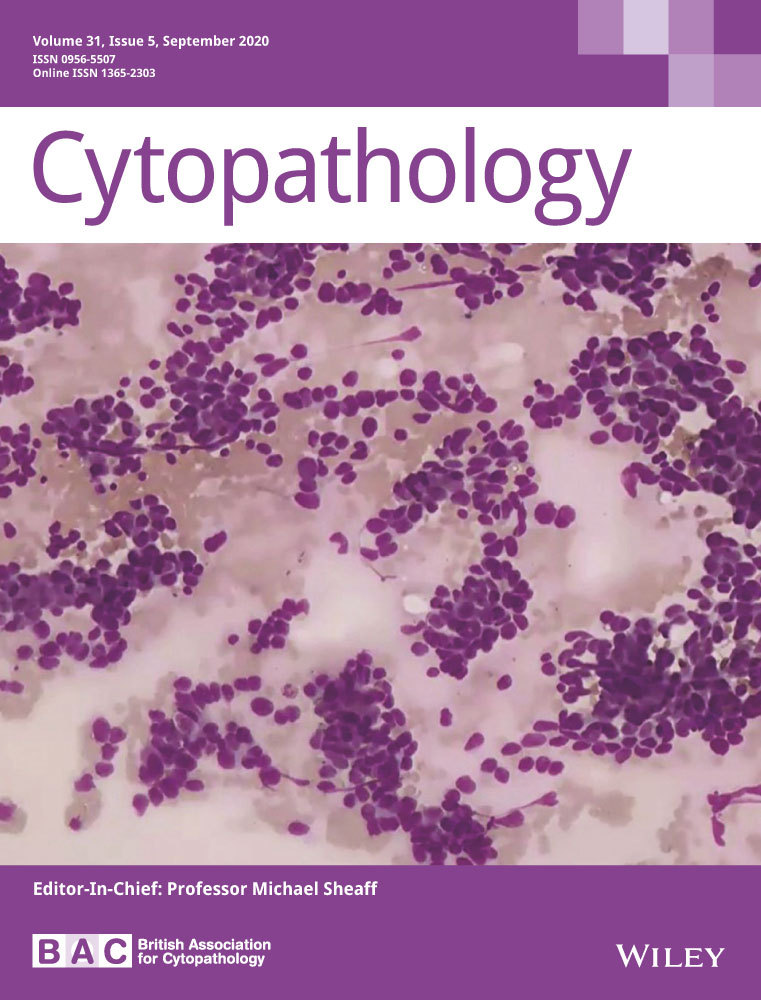Telecytology rapid on-site evaluation: Diagnostic challenges, technical issues and lessons learned
Abstract
Introduction
Rapid on-site evaluation (ROSE) has been widely used to improve diagnostic adequacy and facilitate specimen triage. Telecytology ROSE has gained popularity recently and shown high concordance with traditional ROSE. However, telecytology involves multiple personnel and technical devices that could introduce additional errors. The aim of this paper is to share errors encountered and lessons learned since employing telecytology for ROSE at our institution.
Methods
The laboratory information system was searched for all documented telecytology ROSE errors from 2017 to 2019. These errors were subclassified as technical errors, cytotechnologist-related errors and pathologist-related errors. The following details were recorded for each reported event: type of error, reason for error, ROSE diagnosis, final diagnosis and actions taken to avoid future errors.
Results
Telecytology ROSE errors were documented in 46 (1.3%) sessions. Ten (22%) had technical errors, 13 (28%) were owing to cytotechnologist errors and 23 (50%) were attributed to pathologist interpretation errors. The majority of the technical (90%) and cytotechnologist errors (85%) occurred within the first year of implementation of telecytology. Common ROSE misinterpretation errors included missing microorganisms, misclassifying neuroendocrine tumours as other neoplasms and overcalling malignancy on gastrointestinal endoscopic procedures.
Conclusions
A variety of errors may occur during telecytology ROSE. While some errors are inevitable (eg, information technology downtime), certain telecytology errors can be reduced by increasing staff familiarity with the system, providing timely feedbacks and taking prompt corrective actions. We recommend establishing a mechanism to document and act upon recorded errors as part of a telecytology quality improvement programme.
Abstract
This article describes the experience of a unit which has utilised Telecytology for rapid on-site evaluation (ROSE) since 2017. Although considered successful, the diagnostic challenges and technical issues are shared to assist others who are considering or planning to utilize telecytology for ROSE.
CONFLICT OF INTERESTS
The authors have no conflict of interest to declare.
Open Research
DATA AVAILABILITY STATEMENT
The data that support the findings of this study are available on request from the corresponding author. The data are not publicly available due to privacy or ethical restrictions.




